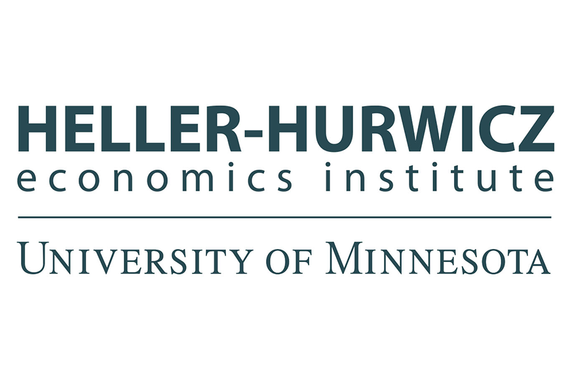The Benefits of Innovative Teaching
During the third year of his PhD, Adway De was researching optimal tax policy and teaching classes like a typical graduate student. Now in his fourth year of the program, he is President of UMN Energy Club, part of an award-winning video on the Combined Heat and Power Plant, altering his research focus to climate change policy, and inviting engaging speakers to innovate upon his teaching routine.
On April 30, 2018, Tricia DeBleeckere, senior planning director from the Minnesota Public Utilities Commision, visited Adway De and his cost-benefit analysis class. DeBleeckere discussed projects she works on and how cost-benefit analysis and the techniques covered in the course play vital roles across many different areas of her work. This day marked the start of the last week of classes of spring semester, so while attendance in many classes dwindles around this time, De’s classroom was packed with students. “The class knew this material would not be included on the exam, and yet so many students attended. This indicates that they really wanted to know how the material we have covered in class relates to industry work,” De says.
De wanted to make his classes more interactive than he had in the past. “The biggest motivation for me to make the classes more engaging was being a part of UMN Energy Club,” De explains. UMN Energy Club is a student organization on campus that provides its members across disciplines with a platform to discuss and learn about all aspects of building a cleaner and safer energy system. De learned about UMN Energy Club through attending the Social Justice Leadership Retreat, where he met the previous president of the club, Kerry Wang. “I found this huge connection between stuff that the club was doing and stuff I’m interested in and my research and it kind of fit it together,” he says.
Not only did UMN Energy Club provide him with a platform to discuss interesting topics with intelligent minds across the University, but it also helped him hone in on a research topic. “In my third year, I was working on optimal taxation problems. Since my fourth year and my time in UMN Energy Club I have been doing optimal taxation in climate models, so kind of like a shift in gear,” De says.
While graduate students comprise a significant portion of the University’s students and are usually on campus for at least one year more than undergraduates, De has not seen much involvement from his fellow graduate students in the campus community. “At UMN Energy Club, there’s always a couple of graduate students and a lot of undergraduates. Both graduate and undergraduate students can learn from each other. Since graduate students are on campus for so long, they should not be aloof from what is happening, but they should be much more involved,” De says.
One of De’s roles within the UMN Energy Club is to facilitate interaction between graduate and undergraduate students. He helped coordinate the Sustainability and Energy Expo, a student-led conference where undergraduates are encouraged to come together and present with graduate students, listen to each other, and learn how to speak to broader audiences. De decided to use this as another opportunity to enhance the experience of students in his cost-benefit analysis course and encouraged them to use the group project they were already required to complete for the course as a presentation for the Expo.
De was able to help the group with more than presentation practice, but also with getting connected with people at the place that they performed their cost-benefit analysis on, the University’s Combined Heat and Power Plant. De is very familiar with the Combined Heat and Power Plant thanks to a national award-winning video he took part in.
“There is a student video competition that takes place at the federal level sponsored by the International District Energy Association (IDEA),” De explains. District energy is the idea that all buildings require heating and cooling, but not at the same time. Instead of having separate plants to heat and cool buildings separately, combine them into one plant, which can then be made more efficient. The University did this by constructing the Combined Heat and Power Plant, which provides heat and electricity to many campus buildings. De and some of his colleagues at UMN Energy Club wanted to feature the University’s new facility, and one club member’s love for Bollywood dancing, by entering the IDEA’s student video competition and winning first place.
While the national attention from the video was exciting, De is more excited about the changes he can make in his own classroom going forward. De says, “It’s a two-way street - there are students who want to network and apply what they are learning to the real world, and there are people in the industry who want to interact with students and tell them about all these opportunities. As an instructor, I am in a position where I can make these parties meet and have a conversation which can be beneficial for both.”
Even though De is new to these endeavors, he is already seeing so many benefits and recommends getting involved in the campus community to both graduate and undergraduate students alike. He says, “When I started my fourth year, I had no idea that I would become president of UMN Energy Club, meet so many people, do this cool video, have speakers, organize a conference, and have all of these new experiences. When you start doing something, you start meeting people, and there’s a whole lot of externalities that come with that. Try to branch out and network, and you never know how you’re going to benefit.”
Click here to view the video on the Combined Heat and Power Plant.
This story was written by an undergraduate student in CLA.



